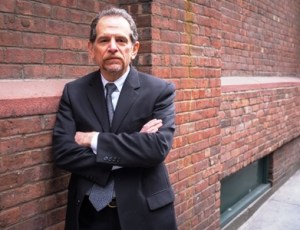The Final Word: Charles Bagli on “Other People’s Money”
By Gus Delaporte March 26, 2013 9:00 am
reprintsThe New York Times’s Charles Bagli’s new book Other People’s Money tackles the housing crisis and 2010 collapse of the Stuyvesant Town-Peter Cooper Village deal. Set for release April 4, the book takes readers inside the bidding war and the eventual loss of billions of dollars of investor money. Mr. Bagli, a former reporter at The New York Observer, spoke with The Commercial Observer about the book, how the Stuy Town deal defined an era, and whether or not investors and the industry learned a lesson.
The Commercial Observer: What is the significance of this story?
Mr. Bagli: For me—just my own thinking—it was a critical moment. Here we are in the midst of another real estate boom, and it just really highlighted the fact that these guys that used to go for the “glass and brass” are out there scooping up what some people would call “meat and potatoes,” the brick tenements. You sort of step back and say: ‘Whoa, what’s this about?’ Like I say in the book, I think Stuyvesant Town, in a way, is for New Yorkers an iconic place, not dissimilar from the Empire State Building or Rockefeller Center.
 You’ve covered the real estate market and the real estate industry for a number of years. Why write this book now, and why address this topic in particular?
You’ve covered the real estate market and the real estate industry for a number of years. Why write this book now, and why address this topic in particular?
I think the question remains: what’s going on in this city? What you’re seeing here is a lot of changes. I think in some ways we may be looking at the European model, best exemplified by Paris, where the working class and the immigrants are pushed out to the suburbs. You have a high degree of alienation and unemployment. Sometimes that will manifest itself in these explosions—a riot. Can a city really function well under those conditions? If they can’t be in the city, doesn’t that make the city less hospitable? Ultimately, will companies go where the labor force goes, or where it is more hospitable? That would be outside of the city.
You’ve seen a profound change, even in Manhattan, where land is now worth more for residential than it is for commercial. What were once choice commercial sites are now sites for super luxury buildings.
I think it’s also about the disparity. Income disparity and everything else—almost half of the units at Stuyvesant Town are now at or near market rate, and I would venture your average middle-class family in New York cannot afford to pay $4,500 per month. So that is fast becoming not an option.
How does this deal and its ultimate failure characterize the real estate crisis? How does it define those years?
I think you had an era, and I don’t know that it’s completely over, because you’re seeing the revival of the CMBS markets. In the first place, Wall Street just threw out the prudent banker’s philosophy, because they had a situation where they would make money on providing mortgages and then convert them to a security, sell them to investors, get it off the balance sheet—and it didn’t really matter what happened to the loan, because it wasn’t their responsibility anymore. So, they dropped the underwriting standards. When people used to buy buildings, you saw maybe 65 percent debt-to-value, then it went up to 80, then 90 percent. You would scratch your head, because the history of real estate is boom and bust. There is no margin for error when the debt load is 90 percent.
There also wasn’t a lot of risk for buyers like Tishman Speyer or BlackRock. They didn’t have a lot of their own money in the deal, and there was a big upside potential if everything went right and very little risk if everything went wrong or even one thing went wrong. The way this thing was designed, everything had to go right, every single thing. It never happened before, and it’s probably never going to happen again.



